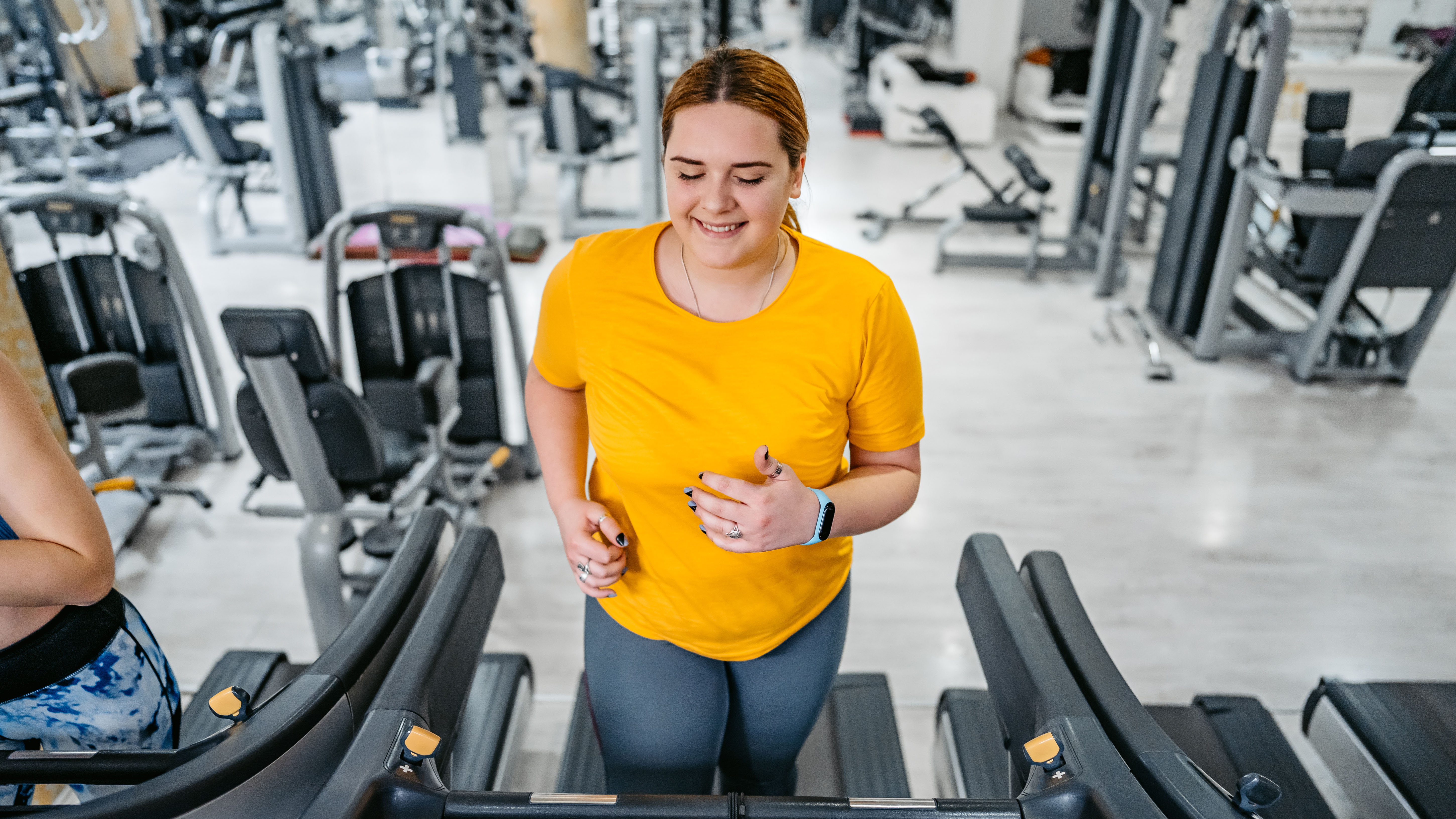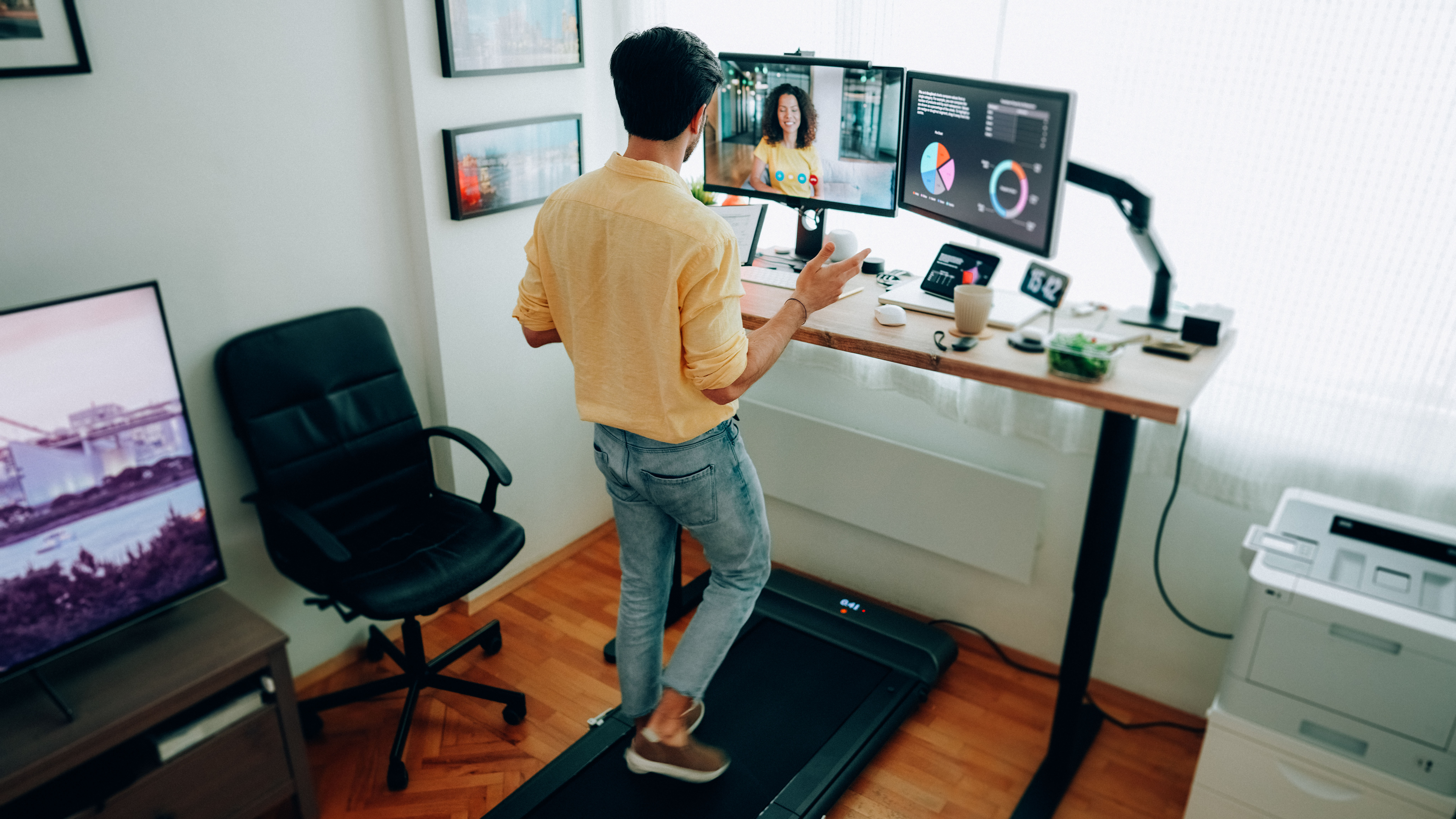Exercise bike vs treadmill: Which is the best cardio machine?
It’s the fitness battle of exercise bike vs treadmill – which offers the most effective workout?

Exercise bike vs treadmill: which is going to give you a better workout and improve your cardiovascular fitness? Whether you have one of the best exercise bikes or best treadmills at home, the truth is, both machines offer an effective way to raise your heart rate, rev up your metabolism and torch calories and body fat.
“These two machines are generally the most popular and common in commercial gyms, home gyms and classes,” says chartered physiotherapist Helen O’Leary. “Both work the cardiovascular system and they can be used for HIIT training or steady state cardio which is maintaining the same pace for a long time.”

Helen O’Leary is a chartered physiotherapist and Pilates instructor/director of Complete Pilates in London, England. Helen graduated from Birmingham University in the U.K. in 2008 and completed a Polestar Pilates Rehabilitation course in 2010. Helen started her career as a physiotherapist in professional men’s rugby and with Cirque du Soleil before launching Complete Pilates. After 13 years of dealing with acute trauma injuries as a physiotherapist, Helen works with clients before and immediately after surgery to optimize their recovery.
But how do they compare? Well, there are certainly benefits to each one. “Exercise bikes are great as they don’t take up much space, can be used by anyone, help improve balance and are non-impact,” O’Leary says. “They are also great for beginners, and help to strengthen the legs. They have also been shown to improve balance when walking too.”
Similarly, treadmills are great to have around. “They are also brilliant for cardiovascular work,” O’Leary continues. “We spend a lot of our time walking so it is a movement pattern we know, which makes it easier to get into. Treadmills have a predictable surface so you don’t need to worry about tripping, you can control the speed and gradient of the incline and there are often pre-designed workouts to challenge you. If you are looking to build strength they will also help with this.”
Yet which of these does physio O’Leary consider to be the best cardio machine? Let’s find out.
Energy expenditure
First we need to understand what energy expenditure means. Put simply, it’s the total number of calories you burn in a day with physical activity and bodily functions. If weight (or fat) loss is your goal, then you need to be in a calorie deficit – that is, burning more calories than your body needs.
- Related: Do exercise bikes burn belly fat?

One of the effective ways to boost energy expenditure is through exercise, but which is the best machine to lose weight?
Get the world’s most fascinating discoveries delivered straight to your inbox.
A comparative study published in the Journal of Strength and Conditioning Research found that running on a treadmill burned between 490 and 646 calories an hour, while an exercise bike burned between 478 and 628 calories for the same timeframe.
But O'Leary says that energy expenditure is heavily dependent on your personal exertion level — strolling gently on a treadmill isn't going to burn as many calories as doing a heavy spin-style class.
“In the general sense, [both machines] are both relatively the same for burning calories,” says O‘Leary. “If this is your exercise goal and there is no sport specific need in place, try doing both to mix it up.”
Muscles used
Both exercise machines are good for muscle building, but the speed and progress of muscle growth will depend on the intensity and frequency of your training.
“For an exercise bike, you mainly work your calves, hamstrings, glutes and quadriceps to push and pull the peddle around. Using the handles will also work your upper body muscles including your arms, the biceps and triceps, and shoulders,” says O’Leary.
“On a treadmill, the main muscles working are the quadriceps, hamstrings, adductors, the calves and glutes. You also work your abdominals and back muscles to hold you upright and arms, shoulders and pecs to swing forwards and back, albeit at a lower level.

“If you use an incline and lean forwards the glutes, hamstrings and calves in particular will work a bit more. Slow it down and put the incline right up and your calves will work a lot harder. If you are running, the abdominal and oblique muscles kick in.
“However it’s really hard to say which one is better as it depends on the person. If you’re fit and well, with no injuries or medical conditions then the treadmill is likely to be harder.
“But if you’re deconditioned, recovering from an injury, struggle with balance, or have a medical issue which could hinder your exercise progression, a bike is likely to be better as you will be able to have the support you need with less strain on the joints.”
Cost and space
Usually exercise bikes have a smaller footprint than treadmills and they are also relatively affordable. Sure, if you want a Peloton-style bike with a big TV screen, you are looking at paying around $1445, plus a monthly subscription for online content and classes. But the best budget exercise bikes (which often fold down to save space) can frequently be found for around $200.
As for treadmills, well, you could opt for an under desk version that doesn’t have arms or handles since these – along with slimline treadmills – tend to be cheaper. If you want a treadmill with an incline/decline option, lots of features and accompanying app, however, expect to pay more, especially if the brand has a cult following like Peloton.

- Related: Best walking treadmills
“You also need to make sure your floor is stable enough to hold a treadmill due to the impact,” O’Leary tells Live Science. “Ideally they would be on a ground floor or reinforced floor if upstairs. In general I would say that if you are buying a treadmill, the average person wouldn’t be moving it around a lot so buy what you think you would use most.”
Additional benefits
Exercise bikes are easier on the joints. They often take up less space and they are low impact. But they are less effective at improving bone density than treadmills, says O’Leary, and it’s harder to see significant muscle growth with cycling workouts when compared with running.

Treadmills, on the other hand, can be used to walk or run in a controlled indoor environment (no more soggy sneakers when the rain hits!). They can also help with rehabilitation and also improve balance and gait.
“Remember you don’t have to run on a treadmill but can still get a good workout by doing a slower, high incline walk,” says O’Leary. “Another positive is that the impact is great for building stronger bones, a huge plus if you have osteopenia or osteoporosis.
Even so you won’t go far wrong with either. “Both machines are a good way to get a home workout and the main thing is to take regular exercise and do something that you enjoy to keep it consistent,” says O’Leary.
Verdict
So exercise bike vs treadmill: which is the better cardio machine? “This is really difficult to answer,” admits O’Leary. “For me, if you’re fit and well then I would say a treadmill, as it offers a full body workout and also helps build bone density, which is particularly important for women over forty who are at higher risk of osteoporosis (weak bones). The option to train with speed and incline means you get a really good cardio workout on a running machine.
“However, if you have had an injury, have arthritis or pain, then I would always go for a bike as my first choice. It means you can get moving without having to worry about putting undue stress on your body.
“The main thing is regular exercise, of any kind, is important. Any exercise is better than none so find something you enjoy and then you’ll be more likely to stick to it.”

Maddy Biddulph is a freelance health and fitness journalist with over 26 years of experience working for consumer media in the US and UK. As a Level 3 personal trainer and weight loss advisor she is used to trying out and reviewing the latest health and fitness products. At Maddy Biddulph Personal Training, she runs one-to-one and small group sessions, as well as group exercise classes. She specializes in mobility work with seniors and runs regular chair workouts in her hometown of Oxford.


